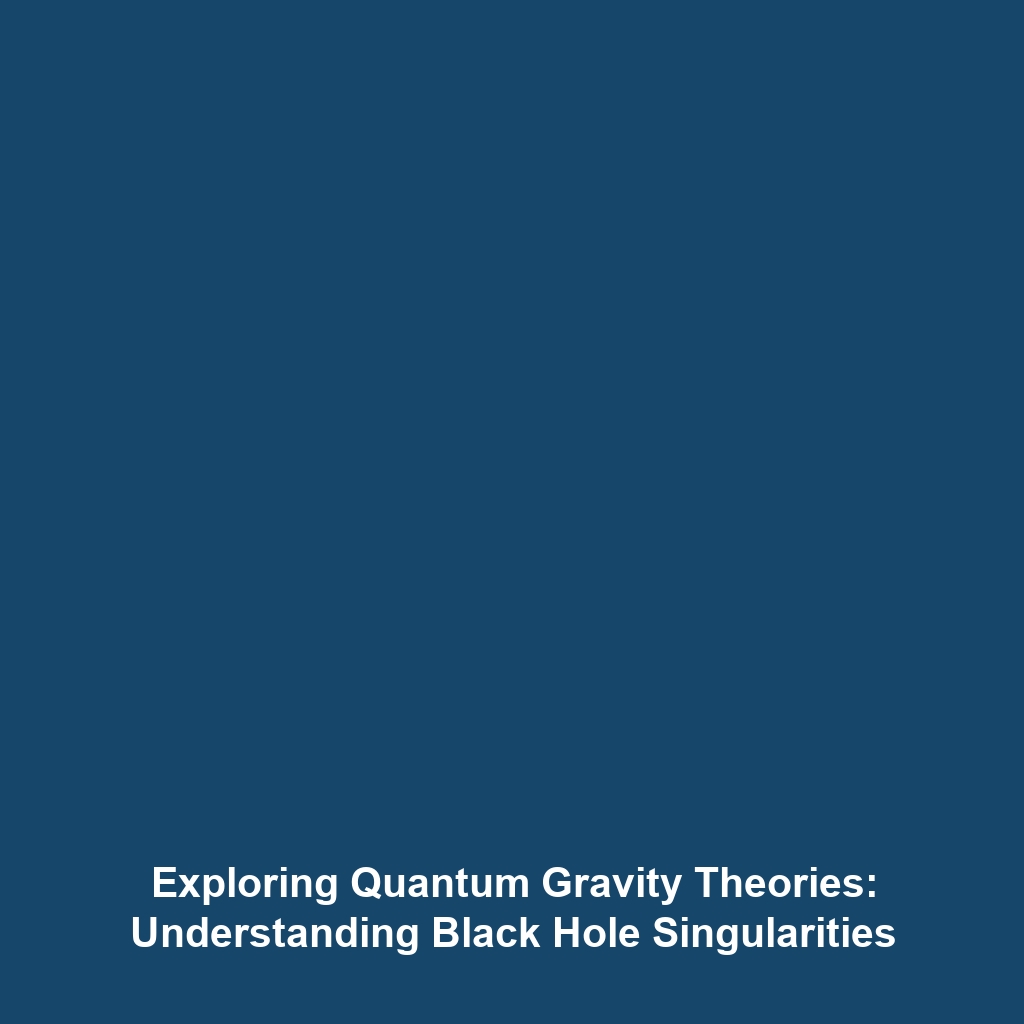<>
Singularity: The Point at the Center of a Black Hole Where Gravity is Infinitely Strong
Introduction
The concept of singularity is central to our understanding of black holes, representing a region where gravity is so intense that the laws of physics as we know them cease to function. As we delve deeper into the cosmos, the mystery of what lies within a black hole’s event horizon captures the imagination of scientists and enthusiasts alike. This article explores the significance of singularities in the context of black holes, elucidating their roles and implications within the framework of theoretical physics and astronomy.
Key Concepts
Defining Singularity
A singularity refers to a point in space where density and gravitational forces become infinite, leading to profound implications for black hole research. At this point, space and time as we understand them break down, raising fundamental questions about the nature of the universe.
Types of Singularities
There are primarily two types of singularities:
- Gravitational Singularity: Typically found at the center of black holes.
- Curvature Singularity: A point where the curvature of space-time becomes infinite.
Singularity vs. Event Horizon
While the event horizon marks the boundary surrounding a black hole beyond which no information can escape, the singularity is the core where mass collapses to an infinitesimally small point. Understanding this distinction is critical to studying the effects of gravitational forces in black holes.
Applications and Real-World Uses
Despite the abstract nature of singularities, their study has far-reaching applications:
- Astrophysics: Understanding singularities aids in the comprehension of stellar evolution and the life cycle of stars.
- Quantum Computing: Insights into black hole physics may inspire future computational models and technology.
- GPS Technology: The principles governing black holes contribute to the understanding of gravitational waves, which can inform satellite positioning systems.
Current Challenges
The study of singularities faces numerous challenges:
- Lack of Empirical Evidence: Direct observation of singularities is impossible due to their nature.
- Complex Theoretical Models: The mathematics involved in describing singularities often leads to paradoxes and inconsistencies.
- Integration with Quantum Mechanics: Bridging general relativity with quantum theory remains a significant obstacle for physicists.
Future Research and Innovations
Advances in technology may soon enable breakthroughs in understanding singularities:
- Gravitational Wave Astronomy: Future detections of gravitational waves may provide indirect evidence of black holes and their singularities.
- Quantum Gravity Theories: New theories that unify quantum mechanics with general relativity could revolutionize our understanding of singularities.
- High-Energy Experiments: Particle accelerators may simulate conditions similar to those near a singularity, yielding insights into fundamental particles and forces.
Conclusion
Understanding the concept of singularity is crucial for the study of black holes and their role in the universe. As research continues to unravel the mysteries of these cosmic phenomena, scientists are hopeful that future innovations will bridge the gaps present in current theories. To learn more about black holes and their fascinating nature, explore our related articles on black holes and gravity.





